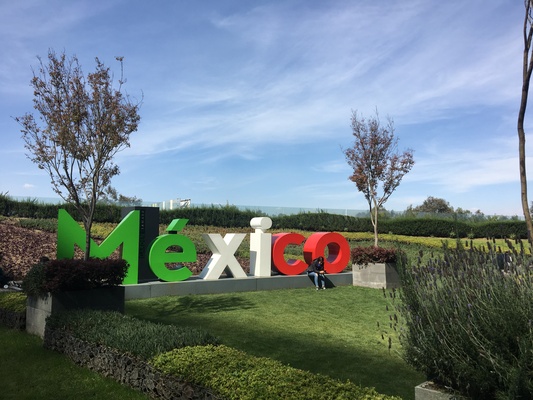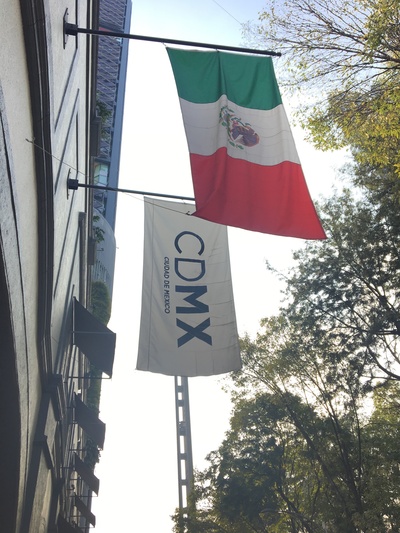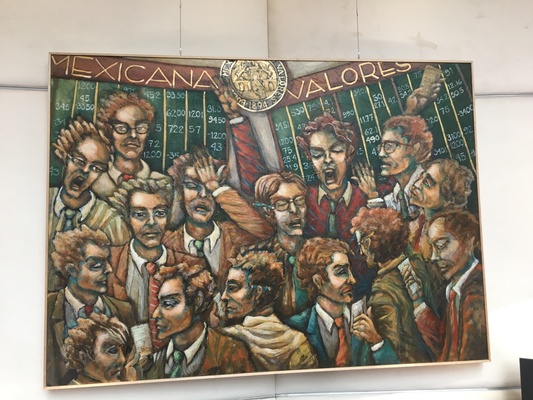- Few domestic equity listings and a low number of retail brokerage accounts in the country underscore the slow pace of development in Mexico’s financial markets.
- Actions of President Andrés Manual López Obrador’s administration are not encouraging for the financial markets, with several recent announcements marking major steps backward. The Mexico City airport cancellation and proposed regulation on banking fees are two examples of the administration’s missteps.
- Looking forward, there is justifiable concern that the new administration may stall or even roll back recently implemented and much-needed reforms in the petroleum, education and labor sectors.
Mexico City has long been one of my favorite destinations; the city is a vibrant tangle of music, culture, and history, with warm smiles and terrific food around every corner. My recent trip to Mexico was discouraging for two reasons: 1) decisions by the new administration raise major red flags about economic growth prospects, and 2) it was clear to me that Mexico’s financial markets may be destined to remain small due to structural problems in the economy, including poorly-designed regulations, excessive government intervention in the markets, corruption and public distrust of institutions, and increasing cross-border competition.
New President López Obrador stunned the markets in late October 2018 with the cancellation of the $13 billion Mexico City airport, a project that was already contracted and under construction. This decision raises concerns over the respect of contract law in Mexico and could impact fixed asset investment in Mexico for years to come. While I was in Mexico City for corporate meetings, another blow to the financial markets was delivered with a rash proposal to limit banking fees. These announcements show an inclination to interfere with the private sector and send a definitively negative signal to investors. Days after the airport cancellation, ratings agency Fitch changed its outlook on Mexico to “negative,” citing policy uncertainty from the new administration.
Despite growing economic ties to Canada and the U.S. in recent decades, Mexico’s financial markets remain small. Two examples that illustrate the shallowness of the financial markets are infrequent equity listings and negligible retail brokerage activity. The past few years have seen very few equity listings: in 2018, there were only four initial public offerings (IPOs) on the Mexican Stock Exchange. The dearth of equity listings likely has many root causes including the large number of family-owned businesses in Mexico and fierce competition from U.S. exchanges. However, I note that of the four equity listings in 2018, two were small real estate investment trusts, one was a small capitalization storage company, and the largest was a company established to design, fund, construct and launch the now-canceled airport.1 The likely bankrupting of the year’s largest IPO by a politically-motivated decision to cancel the airport is a grave sign for the health of the Mexican economy. Together, these four newly-listed equities have less than 1 million USD-equivalent in daily trading volumes, underscoring the small size of the listings and the stunted development of Mexico’s capital markets.
While Mexico continues to have low banking penetration rates and a large percentage of the economy is still informal, I was astounded to learn in one of my corporate meetings that Mexico has only 237,000 retail brokerage accounts.23 Figure 1 details the number of brokerage accounts as a percentage of the population in Mexico, Colombia, Vietnam, China, and Singapore. Mexico lags other developing markets in brokerage account formation; while this low penetration may be an opportunity, it also could be a symptom of structural problems in the economy. Corruption, poorly functioning institutions, and burdensome regulations are just some of the structural issues holding Mexico’s financial markets back.4
| Mexico | Colombia | Vietnam | China | Singapore | |
|---|---|---|---|---|---|
| Number of Retail Brokerage Accounts (1000s) | 237 | 614 | 2,185 | 145,504 | 1,700 |
| Population (1000s) | 112,336 | 52,340 | 99,077 | 1,390,000 | 5,638 |
| Retail Brokerage Accounts/Population | 0.2% | 1.2% | 2.2% | 10.5% | 30.2% |
- Sources: Asociación Mexicana de Instituciones Bursátiles (AMIB), Brasil Bolsa Balcão (B3), Bolsa de Valores de Colombia (BVC), BTG Pactual, Wind Information, Singapore Exchange (SGX), International Monetary Fund.
- Note: This table presents the number of retail brokerage accounts; some markets could have more than one account per person.
One potential ray of hope for Mexico’s capital markets is the rise in secondary listings by foreign firms and funds. The International Quotation System (Sistema Internacional de Cotizaciones, “SIC”), created by the Mexican Stock Exchange to provide investors access to international securities, allows foreign firms to broaden their investor base in Mexico and offers local investors the ability to diversify their holdings overseas in Mexican pesos – with equal corporate action entitlements and without the need to open an international investment account.5 A revamp of the SIC system in 2017 made these listings easier and less expensive, resulting in an increasing number of foreign firms seeking a secondary listing in Mexico.
There are a handful of noteworthy Mexican consumer companies that have performed well over the past decade. However, they have done well almost exclusively due to successful overseas expansion, which reduced their exposure to domestic pressures and structural constraints. I am not alone in my concern that the actions of the new administration in Mexico may portend a stalling or even a rollback of much-needed reforms in the petroleum, education and labor sectors that were enacted by the previous administration. These reforms are still in their early stages, but they are needed to address deep structural problems in the Mexican economy. Mexico’s shallow and slow growing financial markets need a boost. Unfortunately, the new López Obrador administration seems to have other priorities.
Kate JaquetMexico City





- The views and information discussed in this commentary are as of the date of publication, are subject to change, and may not reflect the writer's current views. The views expressed represent an assessment of market conditions at a specific point in time, are opinions only and should not be relied upon as investment advice regarding a particular investment or markets in general. Such information does not constitute a recommendation to buy or sell specific securities or investment vehicles. It should not be assumed that any investment will be profitable or will equal the performance of the portfolios or any securities or any sectors mentioned herein. The subject matter contained herein has been derived from several sources believed to be reliable and accurate at the time of compilation. Seafarer does not accept any liability for losses either direct or consequential caused by the use of this information.
- As of December 31, 2018 the Seafarer Funds owned no shares in the entities referenced in this commentary.
- Nuevo Aeropuerto de la Ciudad de Mexico was listed on the Mexican Stock Exchange in March of 2018 with a 1.5 billion USD-equivalent market capitalization. The company “focuses on the design, funding, construction, and launching of a new airport.” Source: Bloomberg.
- “Financial Sector Assessment Mexico,” The World Bank, 1 March 2017.
- Asociación Mexicana de Instituciones Bursátiles (“AMIB”), Bolsa Mexicana de Valores (“BMV”).
- Manuel Sánchez, “Structural Challenges for the Mexican Economy,” The Bank of Mexico, 14 November 2014.
- “Global Markets,” Bolsa Mexicana de Valores (“BMV”).
![[Chrome]](/_layout/images/ua/chrome.png)
![[Firefox]](/_layout/images/ua/firefox.png)
![[Opera]](/_layout/images/ua/opera.png)
![[Microsoft Edge]](/_layout/images/ua/edge.png)